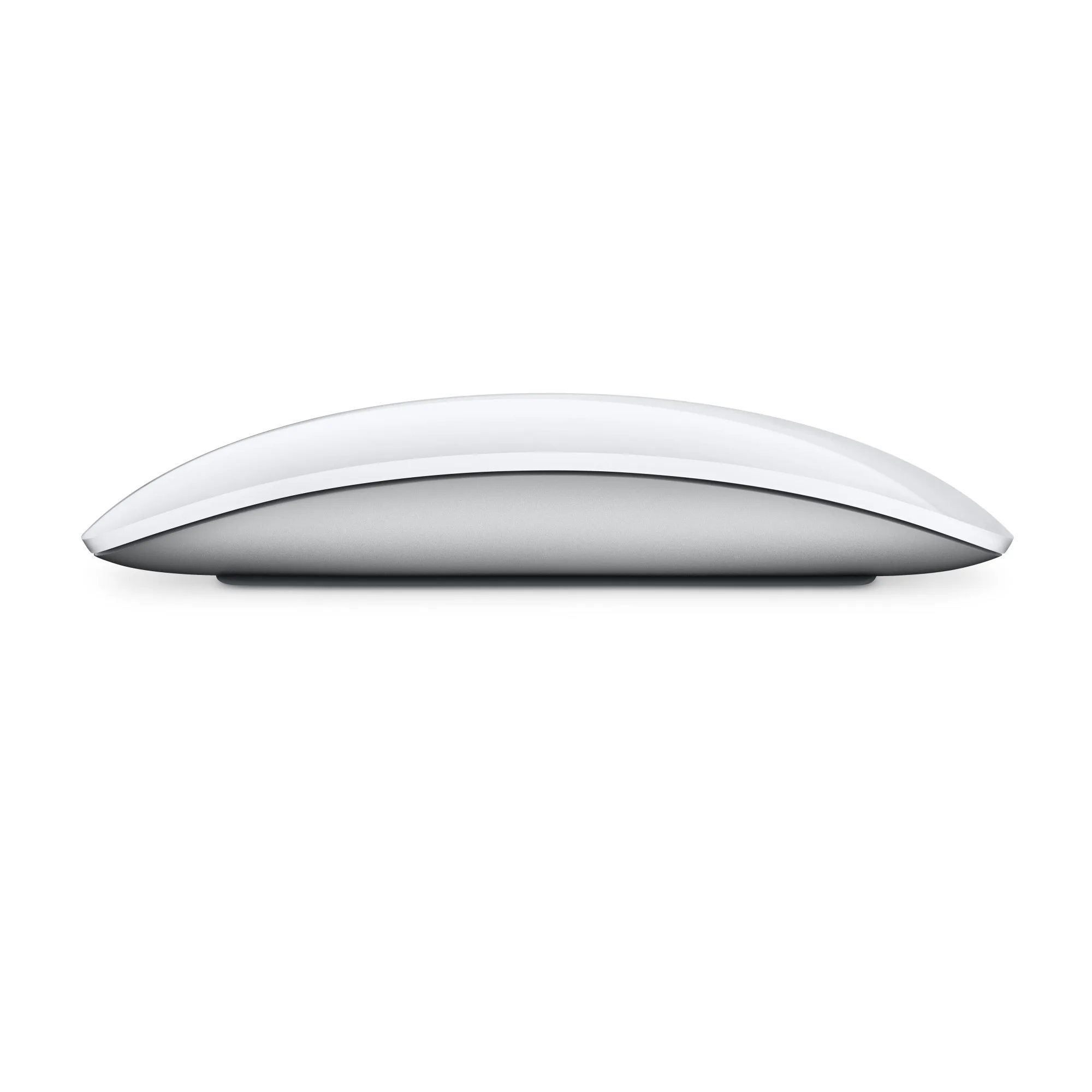Table of Contents
Connect Apple Mouse to Windows – Why?
Apple’s Magic Mouse is loved for its sleek design, smooth multi-touch surface, and premium feel. But can you use it on a Windows PC? Absolutely! Whether you have a Magic Mouse or Magic Mouse 2, you can connect it to Windows 10 or Windows 11 with ease. This 2025 guide will show you how to connect an Apple Mouse to Windows, even if you’re not a tech expert.
In this article, we’ll walk you through the setup process, troubleshoot common issues, and explain how to unlock features like multi-touch gestures. Let’s get started!
What You Need to Connect Apple Mouse to Windows
Before pairing your Apple Mouse, gather these essentials:
- Apple Magic Mouse or Magic Mouse 2: Both models work with Windows, though some features (like gestures) may need extra software.
- Windows PC: Running Windows 10 or 11 (Home or Pro). Windows 8.1 may work but isn’t officially supported.
- Bluetooth Capability: Your PC needs built-in Bluetooth or a USB Bluetooth adapter (available for $10-$20 online).
- AA Batteries or Charged Mouse: Magic Mouse (1st gen) uses AA batteries; Magic Mouse 2 is rechargeable via Lightning cable.
- Optional Software: Tools like Magic Utilities (€19.95/year, ~$22 USD) for full gesture support.
Step-by-Step Guide: How to Connect Apple Mouse to Windows PC
Follow these simple steps to pair your Apple Magic Mouse with your Windows PC.
Step 1: Prepare Your Apple Mouse
Ensure your mouse is ready to connect:
- Turn On the Mouse: Slide the power switch on the bottom to “On” (green indicator for Magic Mouse). For Magic Mouse 2, ensure it’s charged.
- Check Battery: Replace AA batteries for Magic Mouse or charge Magic Mouse 2 for 15+ minutes to avoid pairing issues.
- Enable Pairing Mode: The mouse enters pairing mode automatically when powered on and not connected to another device.
Step 2: Enable Bluetooth on Your Windows PC
Your PC must have Bluetooth enabled:
- Open Settings: Press Windows + I to access Windows Settings.
- Go to Bluetooth: Navigate to Devices > Bluetooth & other devices.
- Turn On Bluetooth: Toggle Bluetooth to “On.” If your PC lacks Bluetooth, plug in a USB Bluetooth adapter and install any required drivers (most are plug-and-play).
Step 3: Pair the Apple Mouse with Windows
Now, connect your Apple Mouse:
- Add a Device: In Bluetooth & other devices, click Add Bluetooth or other device > Bluetooth.
- Find the Mouse: Your PC will scan for devices. Look for “Magic Mouse,” “Magic Mouse 2,” or an unnamed device (e.g., “Mouse” or numbers).
- Pair the Device: Click the mouse’s name to pair. A pairing code is rarely needed, but try “0000” if prompted.
- Verify Connection: The mouse should appear under Mouse, keyboard, & pen in Bluetooth settings. Move it to test the cursor.
Step 4: Test Basic Functionality
After pairing, your Apple Mouse should handle clicking and basic scrolling. If the cursor doesn’t move, recheck the Bluetooth connection or restart the pairing process.
Step 5: Enable Multi-Touch Gestures (Optional)
The Magic Mouse’s multi-touch gestures (e.g., scrolling, swiping) are designed for macOS but can work on Windows with third-party software:
- Magic Utilities: A reliable paid tool (€19.95/year, ~$22 USD) that enables full gesture support. Download from the official Magic Utilities website.
- Boot Camp Drivers: Advanced users with access to a Mac can extract Apple’s mouse drivers via Boot Camp, but this is complex.
- Free Tools: Apps like “Mouse Gesture” offer limited gesture support but may be unstable.
To install Magic Utilities:
- Download from the Magic Utilities website.
- Install and launch the software.
- Configure gestures like two-finger scrolling or app switching.
Troubleshooting Common Issues When Connect Apple Mouse to Windows
If you hit a snag, try these fixes:
1. Mouse Not Detected
- Solution: Confirm the mouse is on and in pairing mode. Restart Bluetooth in Windows Settings. Update Bluetooth adapter drivers from your PC manufacturer’s website.
2. Cursor Lag or Unresponsive
- Solution: Check battery level or charge the mouse. Move closer to the PC to reduce Bluetooth interference. Update Windows via Settings > Windows Update.
3. Gestures Not Working
- Solution: Basic scrolling may work natively, but advanced gestures require Magic Utilities or similar software. Ensure the tool is running.
4. Frequent Disconnections
- Solution: Replace batteries or recharge. Disable Bluetooth power-saving: Go to Device Manager > Bluetooth > Right-click adapter > Properties > Power Management > Uncheck Allow the computer to turn off this device.
If problems persist, unpair and re-pair the mouse.
Benefits of Connect Apple Mouse to Windows
Why use an Apple Mouse on Windows? Here’s why:
- Elegant Design: Its sleek, minimalist look enhances any desk.
- Smooth Scrolling: The touch surface offers fluid scrolling.
- Gesture Support: With software, customize gestures for productivity.
- Rechargeable Option: Magic Mouse 2’s built-in battery saves money.
- Cross-Platform Use: Works across macOS and Windows devices.
Limitations of Connecting an Apple Mouse to Windows
Be aware of these drawbacks:
- Limited Gestures: Multi-touch features need third-party software.
- Software Costs: Magic Utilities requires a yearly subscription.
- Battery Management: Magic Mouse (1st gen) needs AA battery replacements.
- Learning Curve: The touch surface may feel different from traditional mice.
Comparing Apple Mouse to Windows-Compatible Mice
Is the Apple Mouse the best choice for Windows? Compare it to typical Windows mice:
| Feature | Apple Magic Mouse | Typical Windows Mouse |
|---|---|---|
| Design | Sleek, minimalist | Varies (often bulkier) |
| Gestures | Multi-touch (with software) | Limited or none |
| Connectivity | Bluetooth | Bluetooth or USB receiver |
| Battery | Rechargeable or AA batteries | Rechargeable or AA batteries |
| Price | $79 (white), $99 (black) | $20-$100 |
The Apple Mouse shines for design and gestures, but gamers or users avoiding extra software may prefer a Windows-native mouse.
Tips for Optimizing Your Apple Mouse on Windows
Maximize your experience:
- Update Software: Keep Windows and Magic Utilities updated.
- Customize Gestures: Use Magic Utilities to tailor gestures.
- Monitor Battery: Check levels to avoid disruptions.
- Use a Mouse Pad: Improves tracking accuracy.
Frequently Asked Questions (FAQs)
Can I connect an Apple Mouse to Windows without Bluetooth?
No, a Bluetooth connection is required. Use a USB Bluetooth adapter if needed.
Does the Magic Mouse 2 work better on Windows?
Both models perform similarly, but Magic Mouse 2’s rechargeable battery is more convenient.
Can I use multi-touch gestures on Windows?
Yes, with software like Magic Utilities for full gesture support.
Why does my Apple Mouse lag on Windows?
Lag may stem from low battery, interference, or outdated drivers. Charge the mouse, move closer to the PC, and update drivers.
Conclusion: Connect Your Apple Mouse to Windows with Ease
Pairing an Apple Mouse with a Windows PC is straightforward with Bluetooth and the right steps. Use tools like Magic Utilities to unlock gestures and enhance functionality. Whether you love its design or smooth scrolling, the Magic Mouse can elevate your Windows setup in 2025.
Try our guide to connect your Apple Mouse to Windows today! Have questions? Leave a comment or explore our other tech guides.
Apple Mouse: Apple Mouse
You may also be interested in this article: How to install iOS 26 Public Beta
- Should I Upgrade to iPhone 17 Pro? Full 2025 Buyer’s Analysis
- Apple September Keynote Review: Expectations vs Reality, What We Missed
- How to Get Perplexity Pro Free for One Year: The Ultimate Guide to Unlocking Premium AI Access
- iOS 26 Public Beta 6 Launches with UI Tweaks & Bug Fixes
- The Record-Breaking Alexander Isak Transfer: What It Means for Liverpool and Newcastle

